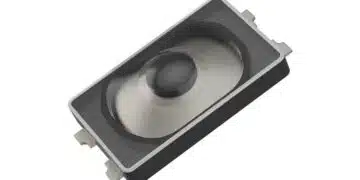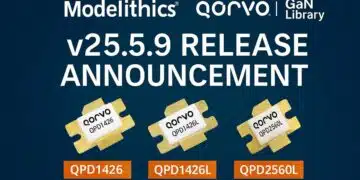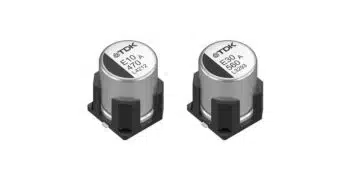As AI applications demand ever-increasing computational intensity, YAGEO, a prominent electronic component manufacturer, is stepping up to address the need for specialized components to power AI servers and devices according to Dr. Philip Lessner, CTO of Yageo Group in article published by TTI Market Eye.
Artificial Intelligence (AI) has taken the world by storm, transforming various industries such as Industry 4.0, Smart Farming, healthcare, and finance, to name a few. AI is revolutionizing how we interact with technology; from language translation to autonomous vehicles, it is rapidly becoming an integral part of our daily lives. However, the widespread adoption of AI comes with unique challenges, particularly in high-power Computing.
Understanding AI and Its Relevance
AI refers to the development of software for machines to perform tasks that typically require human intelligence. This development involves training models using vast amounts of data and then utilizing those trained models to carry out specific tasks or provide answers to various questions. The scope of AI has expanded significantly from narrow tasks to more generalized models like Chat GPT, which can engage in diverse conversations and provide comprehensive responses.
AI that empowers applications like Chat GPT and Autonomous Vehicles (AV) requires massive computing power. As AI technologies advance and find broader applications, the demand for advanced hardware components, such as GPUs, has surged, increasing the need for specialized electronic components.
The AI Boom: Why Now?
While AI models have existed for quite some time, the recent boom can be attributed to their increasing sophistication and broader adoption. The ability to train these AI models and deploy them in real time was enabled by the continuing advances in computational power made over the last 60 years (Moore’s Law). As AI tasks evolve from simple to complex like the advanced capabilities of Chat GPT, the demand for unparalleled computing power has reached unprecedented levels. This surge in AI-driven applications is responsible for the current need for cutting-edge electronic components to support the growing AI infrastructure.
YAGEO’s Participation in the AI Revolution
As AI applications necessitate substantial computing power for training and deployment, the demand for electronic components, including YAGEO products, has risen significantly. This demand is because ‘substantial computing power’ translates into significant electrical power that needs to be provided to the computing engine and supporting systems. YAGEO actively participates in the AI revolution by supporting the power needs of AI-driven hardware devices, such as the widely used GPUs.
While it is challenging to quantify the exact percentage of YAGEO’s business directly attributable to AI, the impact of AI can be seen across multiple segments, particularly in Automotive (23% of total YAGEO revenues) and Computing (19%). AI’s influence extends beyond these segments, impacting IoT growth by analyzing massive data sets, leading to an expansion of sensor products and edge computing devices.
Catering to the AI Market: YAGEO’s Approach
The demands of higher computing power necessitate electronic components with specific attributes. YAGEO is actively developing capabilities across all its product roadmaps and technologies to meet these demanding requirements. High power means that any parasitic losses in the components are magnified, so capacitive and magnetic components with ultra-low loss are needed. Meanwhile, these components must have high reliability under harsh conditions. Since many more components are needed to support the AI processors, component miniaturization is also essential.
As AI continues to push the boundaries of computing power, specific specialized components like higher voltage capacitors, capacitors with higher capacitance and energy density such as U2J and C0G dielectrics with KONNEKT™️, and inductors based on advanced materials like NANOMET® are experiencing accelerated adoption by design engineers. Additionally, there are two key areas where resistors play a significant role in advancing computing power: voltage monitoring and current sensing.
Accelerating the Pace of Innovation
AI has brought about a profound revolution in engineering, effectively shortening design cycles and the need for custom, specialized components. Amidst this ever-evolving technological landscape, YAGEO leads the charge with its comprehensive Easy-To-Design-In (E2Di) solutions suite. These solutions encompass a wide range of offerings, including tailored test support, swift product sampling, access to application experts, and digital tools for extensive component simulations. With a clear focus on expediting design cycles and fostering innovation in AI, YAGEO empowers design engineers through cutting-edge technical content, advanced tools, and top-notch services. By dismantling barriers and facilitating the seamless integration of groundbreaking solutions, YAGEO plays a pivotal role in driving advancements in AI technology.
YAGEO’s AI Customers and Future Outlook
The AI ecosystem consists of CPU/GPU OEMs such as Nvidia, AMD, and Intel, power converter suppliers such as Infineon, ADI, and Renesas, and end users such as Google, Amazon, and Tesla. YAGEO actively collaborates with all these industry leaders, participating in their growth plans and custom electronic components and maintaining solid relationships with them.
YAGEO’s focus on serving the AI market is expected to remain steadfast. As AI applications continue to proliferate and influence segments like Automotive and Computing, YAGEO is poised to grow alongside these industries, supplying essential electronic components to power the AI revolution.
Conclusion
Artificial Intelligence is transforming the world and driving the need for higher computing power. YAGEO, as a leading electronic component manufacturer, is at the forefront of addressing the unique requirements of the AI market. With its advanced components specifically designed to power high-power AI servers and devices, YAGEO plays a vital role in the AI revolution, supporting cutting-edge applications across diverse industries and making AI accessible to billions of users worldwide.






























